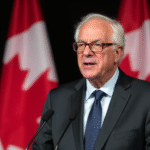Introduction
In the first half of 2025, foreign direct investment (FDI) flowing into Mexico displayed a trend of acceleration, reflecting increased investor confidence in the country despite global trade uncertainty. However, this heightened dynamism only materialized in half of Mexico’s states, widening the regional disparity.
FDI Breakdown
According to data from Mexico’s Secretariat of Economy, reinvestment of profits accounted for $28,914 million, representing 84.4% of the total FDI in the first semester. This figure showed a yearly decrease of 4.5%, with the steepest decline for a comparable period since 2021.
New investments, totaling $3,149 million (9.2% of the total FDI), demonstrated a 246.3% annual growth. In contrast, the previous year saw new investments constitute only 3.0% of the total, the lowest proportion since the first half of 2014. Intercompany accounts explained 6.4% of FDI, with a flow of $2,202 million.
Importance of FDI
FDI plays a crucial role in Mexico’s economic development, driving growth, creating jobs, and modernizing sectors like automotive, manufacturing, and technology. The influx of foreign capital also reflects confidence in Mexico’s macroeconomic stability, making factors like security and legal certainty vital for attracting foreign investment.
New Investments: The Key Driver
Within FDI, new investments—those made by foreign individuals or companies when establishing in a Mexican state, potentially including new production lines, company creation, working capital, etc.—are a significant economic stimulus.
On a state level, the gap between entities is more pronounced. Ciudad de Mexico led with $1,269.9 million of new foreign investment, accounting for 40.3% of the total in the first half of the year.
Quintana Roo (tourism-oriented) followed with $410.3 million, while Baja California Sur came in third with $409 million. Guanajuato, Jalisco, Nuevo León, Querétaro, Baja California, and Nayarit attracted between $107 million and $214 million.
A group of entities with less than $76 million but more than $15 million in new foreign investments included Chihuahua, Yucatán, Guerrero, Coahuila, Sonora, and Estado de Mexico.
States with less than $9.4 million in new foreign investments were observed at the lower end, some of which are crucial to Mexico’s productive apparatus: Oaxaca, Sinaloa, Tamaulipas, Veracruz, Puebla, Colima, Campeche, Tabasco, Michoacán, Tlaxcala, Morelos, and Hidalgo.
Chiapas, Zacatecas, and Durango did not report new investments. Only San Luis Potosí and Aguascalientes showed capital outflow.
Rising Trends
Sixteen entities showed annual increases in attracting new FDI, with Coahuila leading the way from $0.01 million to $25.4 million.
Estado de Mexico, Guerrero, Puebla, Guanajuato, Nuevo León, and Ciudad de Mexico also saw significant increases.
Other annual increases were reported in Nayarit, Querétaro, Jalisco, Quintana Roo, Baja California, Campeche, Baja California Sur, Sonora, and Veracruz.






